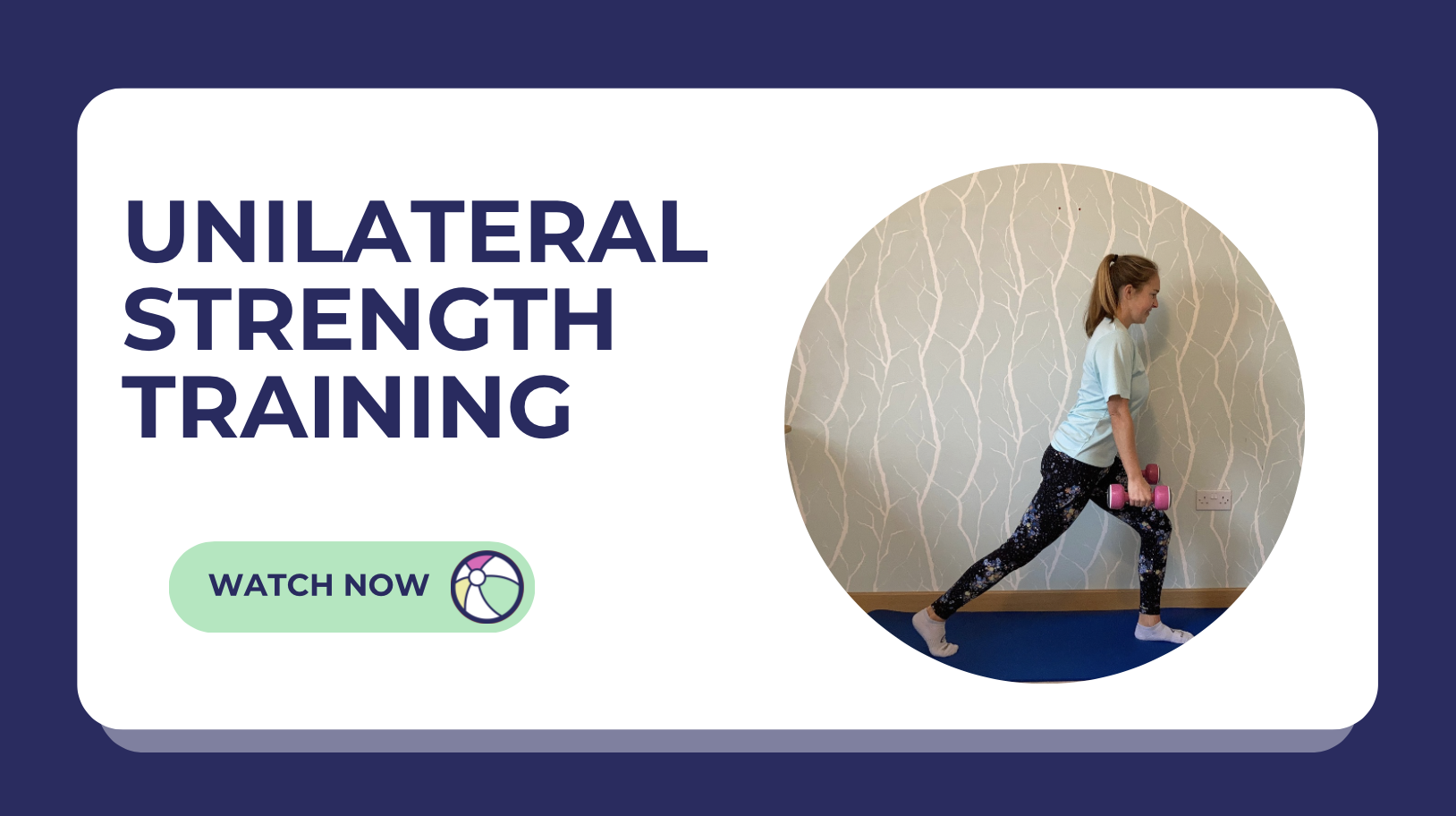
Unilateral
strength training involves working our left and right side of the body
separately through single leg or arm movements. This type of training can be most beneficial to help avoid
imbalances where the dominant side works harder over compensating for
the weaker side.
Here are some of the benefits of unilateral training:
Here are some tips to help you when performing unilateral exercises:
Visit our exercises to target your symptoms to find classes to address your single side weakness.
Here are some of the benefits of unilateral training:
- When you train one side of the body it can also stimulate the opposite side meaning you can improve strength on both sides.
- Helps avoid overtraining or overusing your dominant side.
- Helps improve neuroplasticity as you can repeat challenging movements over and over again while focusing on good form. •Helps to isolate and correct muscle imbalances.
- Improves balance.
- Utilities core muscles to keep the body stable.
- Allows rest time in between exercises.
Here are some tips to help you when performing unilateral exercises:
- Repeat challenging movements over and over again to encourage the brain to find a new neural pathway.
- Perform exercises with low weights, high repetition and perfect quality.
- Include multiple rest breaks in-between exercises.
- Avoid performing exercises with bad technique and stop movements that are not normal.
- Train your strong and weak side separately. Stop the weak side once the form gets worse. Then rest before starting again.
- Try not to lose motivation. Even if you can’t feel or see the movement, it is so important not to give up. Continue to practice the basic exercises over and over again. Performing this movement to help the neuroplasticity and repair processes kick in.
Visit our exercises to target your symptoms to find classes to address your single side weakness.



